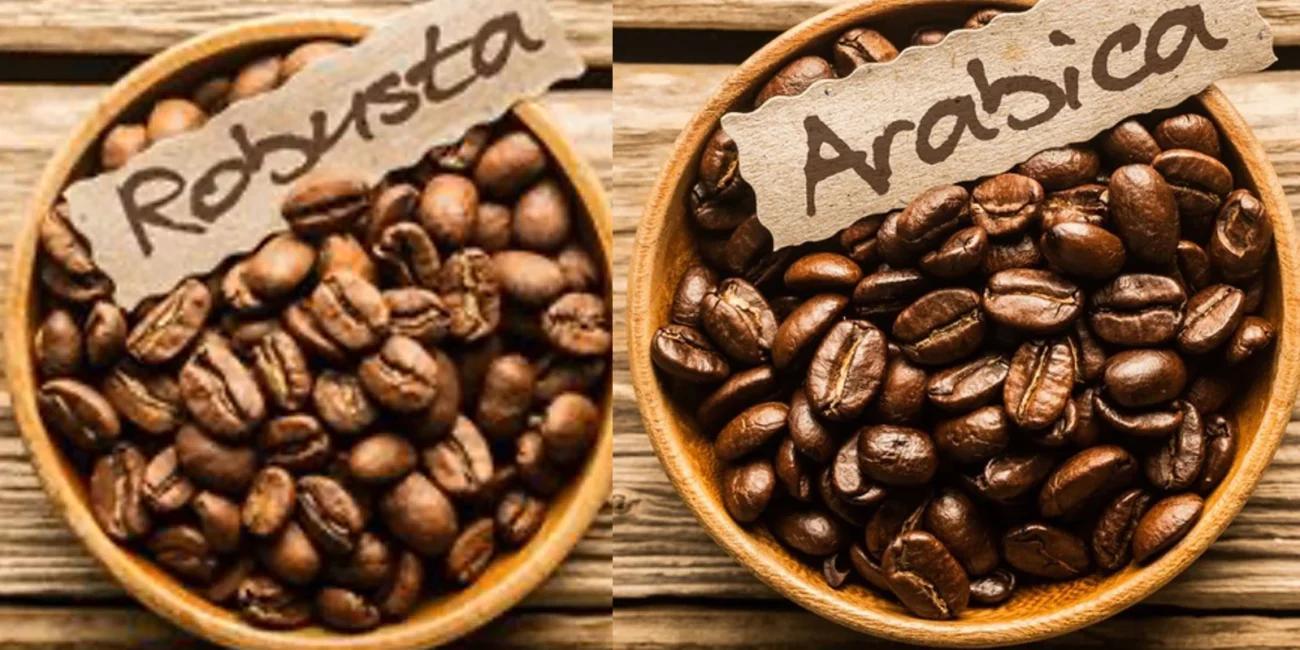
tl;dr: Arabica and robusta coffee are two different types of coffee beans with distinct characteristics.
When it comes to coffee, there are two main types of beans that dominate the market: arabica and robusta. These two varieties have their own unique characteristics, from flavor profiles to caffeine content and even price. In this article, we will explore the differences between arabica and robusta coffee, helping you make an informed decision about which one is right for you.
Arabica coffee
Origin and cultivation
Arabica coffee beans are known for their high-quality and delicate flavors. They are primarily grown in countries with higher altitudes, such as Colombia, Ethiopia, and Brazil. The cultivation process for arabica beans requires specific conditions, including a cooler climate and ample shade. This makes arabica coffee more challenging to grow and more expensive compared to robusta.
Flavor profile
Arabica coffee is often praised for its complex and nuanced flavors. It offers a wide range of taste notes, including fruity, floral, and even chocolatey undertones. The flavors can vary depending on the region where the beans are grown, making arabica coffee a favorite among coffee connoisseurs.
Caffeine content
Compared to robusta coffee, arabica beans have a lower caffeine content. On average, arabica coffee contains about 1.2% caffeine. This makes it a suitable choice for those who prefer a milder caffeine kick or are more sensitive to caffeine’s effects.
Acidity level
Arabica coffee is known for its higher acidity levels compared to robusta. This acidity contributes to the bright and vibrant flavors found in arabica beans. However, some individuals with sensitive stomachs may find arabica coffee to be too acidic, leading to digestive discomfort.
Price
Due to its higher quality and more demanding cultivation process, arabica coffee tends to be more expensive than robusta. The price difference is primarily driven by the limited availability of arabica beans and the higher production costs associated with their cultivation.
Robusta coffee
Origin and cultivation
Robusta coffee beans are primarily grown in countries with lower altitudes and warmer climates, such as Vietnam, Brazil, and Indonesia. Unlike arabica, robusta beans are more resilient and can thrive in a wider range of conditions. This makes them easier and cheaper to cultivate, resulting in a lower price point.
Flavor profile
Robusta coffee is known for its strong and bold flavors. It often exhibits earthy, nutty, and even woody notes. While some coffee enthusiasts may find robusta’s flavor profile less complex compared to arabica, others appreciate its robust and intense taste.
Caffeine content
Robusta coffee contains almost double the caffeine content of arabica beans, averaging around 2.7%. This higher caffeine concentration makes robusta a popular choice for those seeking a stronger and more energizing cup of coffee.
Acidity level
Compared to arabica, robusta coffee has a lower acidity level. This can make it a suitable option for individuals with sensitive stomachs or those who prefer a less acidic coffee experience.
Price
One of the main advantages of robusta coffee is its affordability. Due to its easier cultivation process and higher yields, robusta beans are generally priced lower than arabica. This makes robusta coffee a popular choice for those on a budget or looking for a more cost-effective option.
Comparison between arabica and robusta coffee
Flavor
– Arabica: Complex and nuanced flavors with fruity, floral, and chocolatey undertones.
– Robusta: Strong and bold flavors with earthy, nutty, and woody notes.
Caffeine content
– Arabica: Lower caffeine content, averaging around 1.2%.
– Robusta: Higher caffeine content, averaging around 2.7%.
Acidity
– Arabica: Higher acidity levels, contributing to bright and vibrant flavors.
– Robusta: Lower acidity levels, suitable for those with sensitive stomachs.
Price
– Arabica: More expensive due to limited availability and higher production costs.
– Robusta: More affordable due to easier cultivation and higher yields.
Which one should you choose?
The choice between arabica and robusta coffee ultimately depends on your personal preferences. If you enjoy a wide range of flavors and are willing to invest in a higher-quality coffee experience, arabica coffee is the way to go. On the other hand, if you prefer a stronger and more affordable cup of coffee, robusta may be the better choice for you.
Conclusion
Arabica and robusta coffee offer distinct characteristics that cater to different tastes and preferences. Arabica is known for its delicate flavors, higher acidity, and higher price point. Robusta, on the other hand, offers a stronger taste, lower acidity, and a more budget-friendly option. Understanding the differences between these two types of coffee beans will help you make an informed decision and enhance your coffee-drinking experience. So, whether you choose arabica or robusta, savor each sip and enjoy the unique flavors that each variety has to offer.
Originally posted 2023-08-05 14:19:44.

